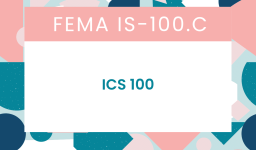- 8th Grade
Source: We Wear the Mask by Paul Laurence Dunbar.
Assessment Answers
| Question | Answer |
|---|---|
| Which of the following best describes a central theme of the text? | People hide their suffering in order to survive. |
| Which of the following quotes best supports the idea of why people wear masks? | “Why should the world be over-wise, / In counting all our tears and sighs?” (Lines 6-7) |
| Why must the people (the “we” mentioned) wear the mask? | The people wear the mask to hide their misery. |
| The speaker says, “We sing, but oh, the clay is vile / Beneath our feet, and long the mile.” (Lines 12-13) What is the most likely interpretation of these lines? | The people’s lives are difficult, but they pretend to feel joy when others can see. |
How does the poet use figurative language to develop the theme in “We Wear the Mask”?
The poet, Paul Laurence Dunbar, uses various forms of figurative language in “We Wear the Mask” to develop the central theme of hiding inner suffering and putting on a facade for the world. Here are some key examples:
1. Extended Metaphor:
- The Mask: The most prominent element is the extended metaphor of the “mask.” It represents the false smile and persona people wear to conceal their true emotions. Lines like “It hides our cheeks and shades our eyes” and “We wear the mask” emphasize its function as a disguise.
2. Personification:
- The Mask Grinning and Lying: The mask is personified as “grinning and lying,” emphasizing its deceptive nature and the contrast between outward appearance and inner reality.
3. Imagery:
- Torn and Bleeding Hearts: This vivid image portrays the deep pain hidden beneath the mask, contrasting the forced smile.
- Vile Clay and Long Mile: The “vile clay” represents the harshness of their journey, while the “long mile” suggests the ongoing struggle they endure.
4. Symbolism:
- Singing: While singing might imply joy, here it becomes symbolic of putting on a performance, masking the suffering and trudging forward (“But let the world dream otherwise”).
5. Contrast:
- Smiling vs. Crying: The repeated contrast between “smiling” and “crying” highlights the disconnect between public facade and hidden emotions.
These figurative devices work together to create a powerful message about the emotional burden of wearing a mask, the pain hidden beneath forced smiles and outward cheer, and the struggle to navigate a world that may not understand or acknowledge their true feelings.
By analyzing these and other examples of figurative language in the poem, you can gain a deeper understanding of the theme and appreciate the poet’s craft in conveying it.
Discussion Answers
Based on what you know about Paul Laurence Dunbar and the status of black Americans in the early twentieth century, why does the speaker feel the need to wear a mask?
Understanding why the speaker in Dunbar’s poem feels compelled to “wear the mask” requires considering both the historical context of Black Americans in the early 20th century and Dunbar’s own experiences. Here are some key factors:
Historical Context:
- Racial Prejudice and Discrimination: During this period, Black Americans faced widespread prejudice and discrimination, including segregation, denial of voting rights, and violence like lynchings. Expressing emotions openly could be seen as a threat or weakness, potentially leading to further discrimination or harm.
- Stereotypes and Expectations: Negative stereotypes portrayed Black Americans as less intelligent, emotional, and deserving of respect. Putting on a mask could be a way of defying these stereotypes and maintaining dignity.
- Limited Opportunities: Access to education, jobs, and other opportunities was restricted for Black Americans. Presenting a composed and agreeable facade might have been seen as necessary to navigate these limited spaces.
Dunbar’s Experiences:
- Dual Identity: As a successful Black poet, Dunbar navigated two worlds: the white literary establishment and the Black community. The mask could represent the need to adapt to each, code-switching and suppressing true emotions to fit expectations.
- Internal Conflict: Dunbar likely experienced internal struggles related to race and identity. The mask could symbolize the effort to reconcile these conflicts and present a unified identity to the world.
- Artistic Expression: The poem itself can be seen as a form of “wearing the mask,” using artistic expression to convey hidden emotions and challenges faced by Black Americans.
Overall:
The speaker’s need to wear the mask represents a complex interplay of historical and personal factors. It speaks to the pressure to conform, hide inner pain, and navigate a world filled with prejudice and limited opportunities. It’s not just about hiding emotions, but also about survival, dignity, and navigating a complex social landscape.
Remember, this is just one interpretation, and the poem can be open to different readings and perspectives. However, considering the historical context and Dunbar’s experiences can provide a deeper understanding of the poem’s powerful message.
Think of other situations where people might wear masks (not literal masks). Do you think a person should hide their emotions? Why or why not?
Situations where people wear metaphorical masks (not literal masks):
- At work: People might mask their true feelings to maintain professionalism, appear agreeable, or avoid conflict.
- In social situations: People might put on a happy face to fit in, avoid judgment, or protect themselves from negativity.
- During difficult times: People might hide their sadness, grief, or anxiety to seem strong, cope with overwhelming emotions, or protect others.
- Online interactions: People might curate their online persona to portray a specific image, avoid harassment, or protect their privacy.
- Creative expression: Masks can be used in art, theater, and performance to explore different identities, express complex emotions, or challenge social norms.
Should people hide their emotions?
There’s no simple answer, as it depends on the situation and individual needs. Here are some points to consider:
Arguments for expressing emotions:
- Authenticity: Hiding emotions can feel inauthentic and disconnect you from others.
- Healthy communication: Openly expressing emotions can lead to healthier relationships and conflict resolution.
- Personal growth: Dealing with emotions helps you understand yourself better and grow as a person.
- Setting boundaries: Saying no and expressing discomfort can protect you from manipulation and harm.
Arguments for masking emotions:
- Protecting yourself: Sometimes masking emotions can protect you from judgment, rejection, or negativity.
- Maintaining professionalism: Certain work environments might require emotional neutrality.
- Dealing with difficult situations: Masking emotions might be a coping mechanism during personal struggles.
- Preserving social harmony: Avoiding emotional outbursts can maintain peace in certain situations.
Ultimately, the decision of whether or not to wear a metaphorical mask is personal and depends on the context and individual needs. There’s no right or wrong answer, and navigating this balance is a complex part of navigating social interactions and personal well-being.
It’s important to consider your own comfort level, the potential consequences of expressing or hiding your emotions, and what feels most authentic and healthy for you in each situation.
In the context of this poem, how do people overcome adversity? Cite evidence from this text, your own experience, and other literature, art, or history in your answer.
While the poem doesn’t explicitly present a single solution, it suggests several ways people cope with and potentially overcome adversity:
Endurance and resilience: Despite their “torn and bleeding hearts,” the speakers “smile” and “sing,” suggesting they endure their struggles without breaking.
Maintaining dignity and agency: The mask represents a choice, a way to navigate a world that might not understand their pain. It allows them to maintain control over their outward presentation and protect their inner selves.
Seeking solace and strength: They cry out to “great Christ,” suggesting reliance on faith or a higher power for support and comfort.
Community and shared experience: While the poem uses “we,” implying a collective experience, it’s possible they find strength and solidarity in shared adversity.
Hope and dreams: Though the “mile” is “long” and the “clay” is “vile,” they may hold onto hope for a better future, motivating them to keep going.
Beyond the poem:
- Historical context: Considering the historical struggles of Black Americans in the early 20th century, wearing the mask could be seen as a form of resistance, maintaining hope, and navigating a system designed to oppress them.
- Other examples: Literature like Maya Angelou’s “Still I Rise” or art like the Harlem Renaissance movement showcase resilience and creativity in the face of adversity.
- Personal experiences: Reflecting on your own or others’ struggles can reveal various coping mechanisms like humor, seeking support, finding purpose, or personal growth.
Overall:
Overcoming adversity in the poem involves a complex interplay of resilience, maintaining dignity, seeking support, and holding onto hope. The specific “how” varies based on individual circumstances and historical context.
It’s important to remember that the poem doesn’t offer a clear-cut answer, but rather opens up a discussion about the multifaceted ways people navigate and potentially overcome challenges.
Does the speaker seem genuine when he recommends wearing “the mask?” Consider when the poem was written and the tone the speaker uses.
Whether the speaker seems genuine in recommending the mask depends on how you interpret the poem and consider its historical context. Here are some arguments for both sides:
Arguments for the speaker being genuine:
- Survival and protection: The poem was written in 1896, during a time of intense racial prejudice and discrimination against Black Americans. Wearing the mask could be seen as a necessary strategy for survival and protection in a hostile environment. It might not be about deception, but about presenting a persona that wouldn’t invite further harm.
- Maintaining dignity: Hiding true emotions could be a way to preserve dignity and agency in the face of oppression. By controlling their outward presentation, the speakers maintain some power over their identity and avoid revealing vulnerability to those who might exploit it.
- Shared experience: The use of “we” suggests a collective experience. Wearing the mask might be a shared coping mechanism, a way to find solidarity and strength in adversity. It’s not about individual deception, but about navigating a system designed to marginalize them.
Arguments for the speaker not being genuine:
- Internal conflict: The poem is filled with contrasting emotions. The speaker smiles while crying, sings while acknowledging the “vile clay” beneath their feet. This suggests a disconnect between inner reality and outward presentation, raising questions about the mask’s effectiveness and the true feelings behind it.
- Questioning the world: The line “Why should the world be over-wise?” could be interpreted as cynicism or resentment towards the dominant society. It implies that wearing the mask is a response to societal expectations and judgments, with a hint of defiance or manipulation.
- Ambiguity and interpretation: Ultimately, the poem leaves the speaker’s intentions open to interpretation. The true emotions and motivations behind the mask remain ambiguous, making it difficult to say definitively whether they are advocating for genuine deception or a complex survival strategy.
Considering the tone:
The poem’s tone is melancholic, filled with sadness, resignation, and even anger. This adds complexity to the question of genuineness. Is the speaker simply stating a harsh reality, or is there a deeper critique of the need to wear the mask?
There’s no definitive answer to whether the speaker is genuine. The poem invites analysis and discussion about the complexities of navigating oppression, expressing emotions, and finding agency in difficult situations.
It’s important to consider the historical context, the speaker’s tone, and your own interpretation to form your own conclusion.
Other Commonlit Answers
- The Distracted Teenage Brain Commonlit Answers
- The Landlady CommonLit Answers
- The Scottsboro Boys Commonlit Answers
- The Road Not Taken CommonLit Answers
- The Gift Of The Magi CommonLit Answers
- The Story Of Ida B Wells
- The Roaring Twenties Commonlit Answers




Leave a comment